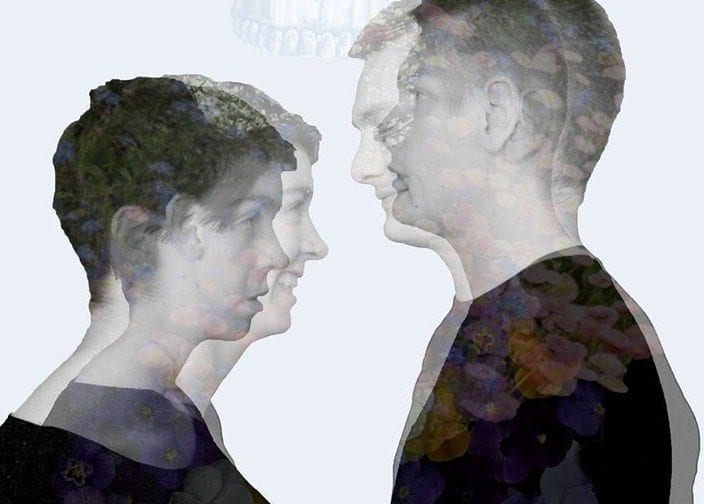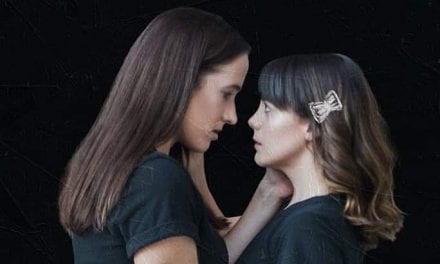SALT LAKE CITY — The black box theater on the second floor of The Fringe Factory is dark, except for the projection of water rippling on the panels backing the stage. The soft sounds of water continue emanating from the speakers as Ophelia (played by Megan Librizzi) and Hamlet (played by Topher Rasmussen) step onstage. Ophelia wears a white dress and cardigan and picks up flower petals strewn across the stage; Hamlet wears black jeans and a hoodie and sings a melancholy melody, self-accompanied on guitar.

Show closes August 6, 2016.
When Hamlet finishes his song, the two sit and talk about shared memories, dreams, death, and the future. They round out the discussion of things that preoccupy youth by complaining about their parents and exploring their feelings about each other. The nonlinear scenes follow Hamlet and Ophelia through significant moments in young love and coming-of-age in scenes that are sometimes whimsical and other times heartbreaking.
Rasmussen and Librizzi had excellent chemistry and played their roles earnestly and convincingly. The use of image projection and the minimal set were effective for the ephemeral mood of the play. Rasmussen’s musical interludes were lovely and maintained an air wistfulness from one scene to the next.
Interspersed with generic themes of young adulthood, Topher Rasmussen’s script drops references to the larger story that develops around Hamlet and Ophelia. Polonius, Horatio, Claudius, and even poor Yorick are referenced to humorous effect. Each scene, taken by itself, is interesting and entertaining. But I came away uncertain of any overriding motif. While a coming-of-age story told through Hamlet and Ophelia is a compelling concept, the script still feels thematically disjointed. Still, with such an interesting concept and Rasmussen’s talent for writing scenes that feel uniquely genuine, I’d be interested to see a future revision of this show.





